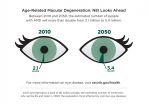Analysis of 21 studies shows exposure to pesticides is associated with increased risk of developing diabetes
2015-09-16
(Press-News.org) A meta-analysis of 21 studies presented at this year's annual meeting the European Association for the Study of Diabetes (EASD) shows that exposure to pesticides is associated with increased risk of developing diabetes by 61%, with different types of pesticides showing varying levels of risk. The study is by Giorgos Ntritsos, University of Ioannina, Greece, and Dr Ioanna Tzoulaki and Dr Evangelos Evangelou, Imperial College London, UK, and colleagues.
How diabetes develops is considered to be an interplay between genetic and environmental factors. Emerging evidence suggests that environmental contaminants--including pesticides--may play an important role in the pathogenesis of diabetes. In this study, the researchers performed a systematic review and meta-analysis of observational studies that assessed the association between exposure to pesticides and diabetes. The association between exposure to any pesticide and all types of diabetes was examined. Separate analyses for studies that looked only at type 2 diabetes (T2D) participants were performed.
A total of 21 studies were identified assessing the association between pesticides and diabetes, covering 66,714 individuals (5,066 cases/ 61,648 controls). Most studies did not report the specific diabetes type examined. In almost all of the studies analyses, pesticide exposure was determined by blood or urine biomarker analysis, one of the most accurate methods. The researchers found that exposure to any type of pesticide was associated with increased risk of any type of diabetes by 61%. In the 12 studies analysing only type 2 diabetes, the increased risk was 64% for those exposed to pesticides. For individual pesticides, increased risk was identified in association with exposure to chlordane, oxylchlordane, trans-nonachlor, DDT, DDE dieldrin, heptachlor and HCB.
The authors conclude: "This systematic review supports the hypothesis that exposure to various types of pesticides increases the risk of diabetes. Subgroup analyses did not reveal any differences in the risk estimates based on the type of studies or the measurement of the exposure. Analysing each pesticide separately suggests that some pesticides are more likely to contribute to the development of diabetes than others."
The authors add that results need to interpreted with caution given the observational nature of the data which does not prove the causality of the observed associations. They are now performing additional analyses of the data and doing a further meta-analysis of pesticide exposure in relation to the other outcomes, including neurological outcomes and several cancers.
INFORMATION:
ELSE PRESS RELEASES FROM THIS DATE:
2015-09-16
New research presented at this year's annual meeting of the European Association for the Study of Diabetes in Stockholm shows that a 10-times increased exposure to organic pollutants in early pregnancy is associated with a 4.4 times increased risk of a pregnant woman developing gestational diabetes. The research is by Assistant Professor Leda Chatzi, University of Crete, Heraklion, Greece.
Persistent Organic Pollutants (POPs) are a group of diverse substances, including polychlorinated biphenyls (PCBs) and organochlorine pesticides that are resistant to biodegradation ...
2015-09-15
On Sept. 13, 2015, the Solar and Heliospheric Observatory -- a joint project of the European Space Agency and NASA -- discovered its 3,000th comet, cementing its standing as the greatest comet finder of all time. Prior to the 1995 launch of the observatory, commonly known as SOHO, only a dozen or so comets had ever even been discovered from space, while some 900 had been discovered from the ground.
The 3,000th comet was originally spotted in the data by Worachate Boonplod, of Samut Songkhram, Thailand.
"I am very happy to be part of a great milestone for SOHO's comet ...
2015-09-15
UNIVERSITY PARK, Pa. -- Asking just two questions may be able to help nurses and doctors quickly and easily identify delirium in hospitalized older adults, according to health researchers.
Delirium is a reversible cognitive condition that can be resolved if caught and treated early.
"Delirium can be very costly and deadly -- and with high-risk patients, time matters," said Donna M. Fick, Distinguished Professor of Nursing and co-director of the Hartford Center of Geriatric Nursing Excellence at Penn State. "Our ultra-brief two-item bedside test for delirium takes an ...
2015-09-15
According to a NASA analysis of satellite data, the 2015 Arctic sea ice minimum extent is the fourth lowest on record since observations from space began.
The analysis by NASA and the NASA-supported National Snow and Ice Data Center (NSIDC) at the University of Colorado at Boulder showed the annual minimum extent was 1.70 million square miles (4.41 million square kilometers) on Sept. 11. This year's minimum is 699,000 square miles (1.81 million square kilometers) lower than the 1981-2010 average.
Arctic sea ice cover, made of frozen seawater that floats on top of the ...
2015-09-15
Earth's gravity has influenced the orientation of thousands of faults that form in the lunar surface as the moon shrinks, according to new results from NASA's Lunar Reconnaissance Orbiter (LRO) spacecraft.
In August, 2010, researchers using images from LRO's Narrow Angle Camera (NAC) reported the discovery of 14 cliffs known as "lobate scarps" on the moon's surface, in addition to about 70 previously known from the limited high-resolution Apollo Panoramic Camera photographs. Due largely to their random distribution across the surface, the science team concluded that the ...
2015-09-15
People with a genetic predisposition for age-related macular degeneration (AMD) significantly increased their odds of developing the blinding eye disorder if they had a history of heavy smoking and consistently did not exercise or eat enough fruits and vegetables, according to an observational study of women funded by the National Eye Institute, part of the National Institutes of Health.
Eating a healthy diet and getting exercise have been shown in earlier studies to protect against AMD, a leading cause of vision loss among people age 50 and older. Findings from this ...
2015-09-15
A new computational model developed by scientists from the University of Chicago could help improve the allocation of U.S. biomedical research resources. The tool, called the Research Opportunity Index (ROI), measures disparities between resources dedicated to a disease and its relative burden on society. ROI identifies diseases that receive a disproportionate share of biomedical resources, which represent opportunities for high-impact investment or for the realignment of existing resources. It is designed to provide an unbiased, data-driven framework to help scientific ...
2015-09-15
In the midst of ferry boats, container ships and tourists crowding Seattle's Elliott Bay, young salmon are just trying to get a decent meal.
The fish hatch in the rivers and streams that feed into Puget Sound and almost immediately rely on eating small organisms near the shore, including in the heart of Seattle's commerce-filled waterfront.
Though salmon share the busy Elliott Bay waters with boats and barges, scientists suspect built-up, "armored" shorelines and large piers may be the main culprits disrupting fish habitat. These artificial structures block light and ...
2015-09-15
Reminders to take medication, delivered to patients via an electronic pillbox, may be able to improve adherence to tuberculosis (TB) treatment. The findings, reported this week in PLOS Medicine, are the result of a cluster randomized controlled trial by Shiwen Jiang of the Chinese Centers for Disease Control & Prevention, Katherine Fielding, of the London School of Hygiene & Tropical Medicine, and colleagues.
The study randomized 36 districts in the provinces of Heilongjiang, Jiangsu, Hunan, and Chongqing, China to receive one of four approaches to tuberculosis case management: ...
2015-09-15
Selective serotonin reuptake inhibitor (SSRI) use is modestly associated with violent crime, according to a study published this week in PLOS Medicine. The cohort study, by Seena Fazel from the University of Oxford, and colleagues, showed in subgroup analysis that this association was evident in participants aged 15-24, but not significant for individuals aged 25 and older.
SSRIs are widely prescribed, but inconclusive evidence links SSRI use with violent behavior. In this study, Fazel and colleagues compared the rate of violent crime while individuals were prescribed ...
LAST 30 PRESS RELEASES:
[Press-News.org] Analysis of 21 studies shows exposure to pesticides is associated with increased risk of developing diabetes




